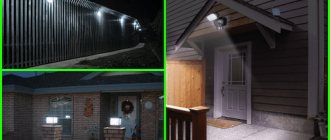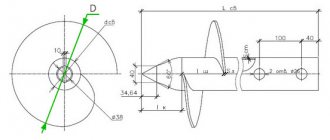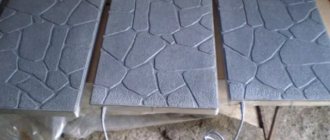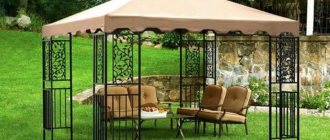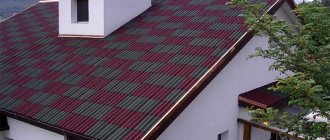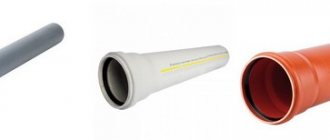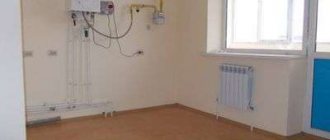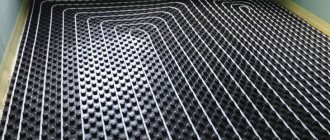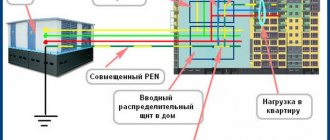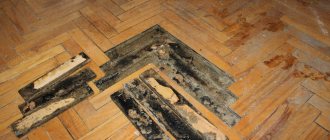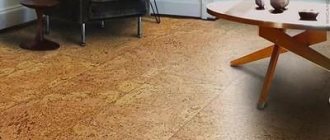Laying out water supply pipes is a problem that has to be solved during a major overhaul. Sooner or later, the time comes when the water supply system becomes unusable. There can be many reasons for repairing and replacing the water supply system; we will list the main ones - the formation of fistulas, condensation on pipes, the appearance of rusty water from the tap, etc.
Is it possible to replace the water supply system in an apartment or private house on your own? After all, the work of plumbers will not be cheap. And the answer to this question is positive - yes, this is possible.
At the same time, special permits and registrations will not be required for work. All that is necessary is to shut off the water supply to the riser for an hour.
All work on installing the water supply system will have to be carried out in strict sequence, otherwise the constructed structure will not operate without failure.
The types of pipe layouts affect the quality of water supply to water supply and heating systems, as well as the durability of communications and their maintainability. Tee and manifold wiring diagrams are used.
The need for competent pipeline design
Assembling the water supply pipeline by a master.
A standard water supply project for an apartment involves wiring from a common hose to sinks installed in the bathroom and kitchen. But the development of household appliances places increased demands on documentation.
For example, for a washing machine or dishwasher it is necessary to install additional outlets with safety valves.
The equipment is demanding in terms of water pressure, which decreases if the lines are laid incorrectly.
Cold water distribution
Installation work on installing a cold line begins with the installation of a manifold, which is placed in the kitchen if it is located next to the toilet and bathroom. If not, then the collector is placed closer to the sanitary zone. This work is not hard and can be done with your own hands.
To do this, you will need a collector with outlets equal to the number of consumption sources. Then it needs to be fixed to the wall using screw clamps or brackets. Next, a metal-plastic pipe with a diameter of three quarters of an inch is laid from the central valve of the water supply to the inlet pipe in the manifold.
Collet fittings are used for mating.
They are also used to construct outlets with a diameter of half an inch from the collector to the points of consumption. In this case, the pipes are laid in the baseboard area. It is imperative to install a valve between the collector and the pipe that will close each outlet.
When the outlet has reached the sink or bathtub, you need to create a vertical section. To do this, the pipe must be raised 50 centimeters above the floor. Next, you need to connect the pipe to the mixer or tank with a reinforced hose. Finally, a faucet is mounted on the sink and the drain is connected to the sewer.
Basic methods for laying pipes in a residential area
Before installing water in an apartment, you must choose one of the following methods:
- sequential (in a number of sources referred to as tee);
- collector;
- combined (includes sections with sequential and collector circuits).
Serial connection diagram
Tee pipe distribution consists of a central common line to which consumers are connected in series. For example, hot and cold supply systems in apartment buildings are assembled according to this scheme.
The main collector pipeline has an increased diameter to supply additional volume of liquid to consumers. The name “tee” is used because of the installation of tees on the main line, allowing the connection of additional plumbing equipment.
The method is characterized by ease of design and implementation. The fewer highways that need to be installed in a room, the lower the cost of the structure. The technology is not used with a large number of consumers, since there is a gradual drop in pressure.
In case of repair of water pipes, it is necessary to completely shut off the liquid supply (the distribution valve is located near the cold water and hot water riser).
The disadvantage is difficult access to pipelines and connectors hidden under decorative trim (if hatches are not provided in advance).
Tee connection wiring.
Manifold pipe routing
Radial or collector distribution of water supply pipes in an apartment is designed for rooms with a larger area and a large number of water distribution points.
The circuit includes a collector (connected to the riser), from which a separate branch (both cold and hot supply) is laid to each consumer.
The technology provides uniform pressure, regardless of the number of devices turned on and the length of pipelines. In the event of a breakdown, only the section with the faulty point is switched off.
The radial circuit ensures the installation of filters and reducers for each device, allowing you to regulate the water pressure in accordance with the requirements.
The disadvantage is the increased number of hoses or additional components, which increases the complexity of assembly and the cost.
In the apartment, it is necessary to provide space for collectors, in front of which a main shut-off valve is installed (in new buildings, automatic valves with a leakage sensor are often used).
Manifold pipe installation.
Combined scheme
The combined technology is used in rooms with a branched layout (for example, in multi-room apartments or hotels). A manifold for water supply to consumers is connected to the riser; branches with tees lead from the device to supply liquid to a group of rooms.
The wiring diagram allows you to connect a large number of water points to the riser. In case of damage, some consumers have to be disconnected. The technology allows you to reduce the cost of purchasing additional materials and installation work in the apartment.
Why is it important to make a plan?
Pipe routing begins with a drawing. Water supply design cannot be neglected. The task of delivering water to all water distribution points in a residential area is not an easy one.
The home owner will want to install a shower cabin, a dishwasher and an automatic washing machine. The bathroom is located in a separate room, where a bidet is placed next to the toilet. The floors in the apartment are heated.
An increase in the number of water distribution devices complicates the water supply scheme and requires greater productivity of the water supply system.
In order to correctly determine the size of the pipes and the number of plumbing fixtures, fittings and other parts necessary for the water supply system, you need to carefully consider the wiring around the apartment.
The result of competent design will be efficient operation of the system and reduced costs for materials, installation and operation of the water supply system.
The pipeline diagram is drawn on the apartment plan and the names and locations of plumbing fixtures and auxiliary parts are indicated. Here the directions of pipes for hot and cold water, cross-sectional size, and material of manufacture are determined.
Such a plan is not difficult to draw even for a homeowner inexperienced in plumbing matters. To do this, it is enough to know the types of wiring and the list of devices that ensure stable operation of the water supply network.
Features of collector installation
The device is a metal or plastic hollow body with a hole for connecting to the riser and several outlets for connecting pipelines.
The inlet cross-section is 25-30% larger than the size of the outlet channels, which supports the supply of liquid to several consumers with a constant pressure.
Metal collectors have threaded couplings for installation. Plastic adapters for polypropylene are equipped with compression-type fittings or solder adapters.
There are designs with conical bushings, which allow the installation of hoses made of metal or plastic and simplify the operation of the water supply system.
When selecting a distributor circuit, take into account the flow temperature (there are models for hot or cold pipelines) and the number of outlets (the standard provides from 2 to 6 outlets).
If a larger number of consumers are used in the room, then several products will need to be connected in a series circuit. Each dispensing unit is equipped with a separate pipeline with a threaded plug.
Installed collector.
What you need to know about collectors?
The collector block used in the installation of water supply systems is a piece of pipe with several side branches. The diameter of the input channel is 25-35% larger than the cross-section of the highways used for switching consumers.
This design ensures a uniform supply of liquid to several simultaneously switched on water taps while maintaining the required pressure. When selecting equipment, you should remember that there are manifolds for distributing cold and hot water.
To make the device body, brass or stainless steel is used; there are devices made of impact-resistant plastic that can withstand heating to temperatures of more than 100°C. Metal products are attached to pipelines using threaded bushings. To connect plastic pipelines, manifolds with compression transition elements or with special bushings (fittings) are used that allow plastic pipes to be soldered.
Manufacturers offer collector blocks with a clamp connection (Eurocone). The design of the unit uses a nut and a special split washer; rubber sealing rings are installed on the pipelines. Devices with a combined switching circuit are produced, allowing you to connect pipelines made of different materials.
When selecting a collector, you should take into account the number of outputs intended for switching external equipment. Standard products provide up to 6 channels, but manufacturers allow 2-3 collector modules to be connected in series. For coupling, couplings are provided at the nodes; the method of connection depends on the design features of the collector. If switching of the additional unit is not required, the collector is closed with an end cap.
Recommendations for the buyer
Basic recommendations for selecting a collector:
- Before purchasing a collector, you should decide on the type of material of the water pipes. It is recommended to use products made of polymers (for example, cross-linked polyethylene) that are not destroyed by water and do not have threaded connections.
- During the installation process, it is necessary to provide for the installation of a tap for the side lines. There are manifold blocks with integrated valves; the installer needs to connect the pipes and the manifold itself to the central riser. Please note that if the locking mechanism is damaged, the entire manifold block will need to be replaced. When using brass or stainless steel products, the taps must be installed separately.
- A block of additional devices is installed in front of the manifold (for example, meters, filters or a check valve).
Nuances for different types of bathrooms
In apartment buildings there are several types of bathrooms:
- separate, in which there is a concrete wall between the bathroom and the toilet;
- combined, without internal partitions (some owners dismantle them, further increasing the area of the room).
Combined
In such a bathroom, the water supply lines are routed along the wall along the perimeter of the room from the riser through cut channels. Couplings are provided at consumer connection points.
Ball valves are placed in a shield or covered with a box. After laying the mains, the channels in the wall are sealed with a cement mixture, and finishing material (for example, tiles) is installed on top.
Perimeter wiring in a combined bathroom.
Separated
When wiring in a separate bathroom, a hole is cut in the wall necessary for supplying a sewer drain or water supply to the riser.
The lines for supplying liquid to consumers are located inside the walls.
If necessary, provide an additional connection point for a washing machine, heating radiator or heated towel rail (the coil on the wall is heated by circulating hot water).
Wiring in a separate bathroom.
Sewage installation
Do-it-yourself sewer installation is much easier than installing water lines. The main nuances of the internal drainage system are:
- slope to the riser 2 cm vertically per 1 m length;
- the use of gray socket pipes for internal sewerage;
- direction of the sockets from the riser;
- pipe diameter 110 mm for the toilet, 50 mm for horizontal lines, vertical sections;
- the use of oblique tees with a 45° upper branch pipe in the middle of the main line, a 90° branch for connecting the plumbing fixture farthest from the riser;
- use of 45° bends to bend the sewer at one horizontal level.
Sewer pipes are laid from the riser cross towards the toilet, sink and other plumbing fixtures in stages:
- installation of a 110 mm section to the toilet;
- installation of a tee with a transition to a diameter of 50 mm;
Transition of the drainage system from a diameter of 110 mm to 50 mm. - distribution of the utility system along the wall to the farthest consumer.
Depending on the location of the riser, household and plumbing fixtures, and the layout of the bathroom, the pipes can go in one direction or diverge in different directions. This changes the type of fittings and their number for assembling horizontal lines.
The electrical cable is embedded in the wall higher than the water supply and drainage system. This reduces the likelihood of a short circuit due to a break in the sewer system or cold water/hot water pipes.
By analogy with water sockets, the sockets of sewer pipes and fittings can be embedded in walls. All plumbing drains are connected to tees, bends through pipes, corrugations with a diameter of 40 mm only after siphons with hydraulic seals.
The exceptions are toilets, urinals, and bidets, in the bodies of which siphons are structurally built-in.
To prevent sewer odor, corrugated or rigid pipes are connected to the fittings of the internal sewerage system through rubber cuffs with a “ruff”.
Selection of pipes for the water supply system
Several types of products differing in material are used to supply water:
- Copper pipelines connected by soldering are characterized by increased elasticity and corrosion resistance. Designed for operation at temperatures up to +250°C. Equipment is required for bending or soldering workpieces. When installing metal bushings, a galvanic couple is formed, which leads to the destruction of parts. Products of this type are rarely used in apartment buildings due to their high price and electrical conductivity.
- Steel with surface galvanization was used in the USSR in the construction of buildings. They are connected by resistance welding or threaded couplings. They are not highly resistant to corrosion; hidden mounting in apartment walls is not allowed.
- Metal-plastic products with increased elasticity. They are connected by threaded bushings or by crimping. The blanks are not suitable for hidden installation in apartment walls; they are corrosion resistant. The inside is not covered with deposits.
- Polybutylene type, withstands heating up to +90°C. The workpieces are connected by soldering. Due to the high price, they are used to a limited extent (for example, when installing heated floor coverings).
- Reinforced polyethylene blanks can withstand pressure up to 3.5 atm. Increased elasticity allows water to solidify, so the products can be used in summer cottages. It is not recommended to install it within the walls of residential buildings.
- PVC products, joined by glue or soldering, are used for process water pipes. They can withstand pressure when supplied with liquid no higher than 3.5 atm, and degrade under the influence of ultraviolet radiation.
- Polyisopropylene type. The blanks are designed for pressure up to 12 atm. and temperatures up to +130°C. They are distinguished by their low price and are resistant to the formation of salt deposits. They are used for the construction of risers and wiring in residential buildings and office premises.
Water pipes.
Which water pipes are better?
It is impossible to say unequivocally which pipes are best for wiring - there is no ideal material, there are more or less suitable ones for given conditions. Let's look at the most popular options, their advantages and disadvantages:
Polypropylene pipes
The option is good for everyone, except for the large thermal expansion - up to 5 cm per 1 meter, which is a lot. If the route is long, it is necessary to install a compensator or use reinforced pipes. Their thermal expansion is several times less, but their prices are higher. For hot water, you definitely need to use reinforced pipes, but whether you use fiberglass or foil is up to you. The routing of cold water pipes can be done with a regular PPR pipe for cold water - here thermal expansion is not so critical.
Polypropylene pipes for water supply distribution are an excellent choice
Another point that is relevant if you are doing the work yourself, or if you are planning to install hidden communications, is the quality of the connections. In principle, there is nothing complicated in soldering polypropylene, but without experience you can “mess up”, as a result, after a while the connection may leak. If you have no experience in welding polypropylene, it is very undesirable to hide joints under finishing. In this case, it is better to choose an open installation method.
The installation of polypropylene pipes in the bathroom and toilet has many positive aspects:
- a correctly made connection turns out monolithic;
- there is no narrowing of pipeline diameters at soldering points;
- high maintainability;
- long service life;
- ease of installation.
In general, it’s not for nothing that this material has been so popular lately.
PVC for water supply
When laying PVC pipes, an adhesive connection is used. There is a special glue that dissolves the top layer of polymer. Both parts to be glued are lubricated with it, pressed against each other and held for some time. As a result, the connection is almost monolithic, strong and reliable.
PVC pipes can bend
There are two types of connections: butt, when two pieces of pipe are joined, and using fittings. It is easier to work with fittings, but the joints are narrowed. With a butt connection there are no narrowings, but it is much more difficult to do it qualitatively.
In principle, all the pros and cons are the same, with the addition of a few disadvantages - it is only suitable for transporting cold media - no more than +40°C, that is, you will have to use other pipes for hot water supply. Scratches and chips reduce the strength of the pipe, therefore a threaded connection is excluded.
Metal-plastic
The water supply system made from metal-plastic pipes is also suitable for hot water supply - it can withstand temperatures up to +105°C. A positive difference from all of the above is its high plasticity - these pipes can be bent with a fairly small radius. This simplifies and reduces the cost of installation (fittings are expensive).
Metal-plastic is not the best choice
The disadvantage of using metal-plastic pipes for water supply is the strong narrowing at the joints - in the fittings. This leads to a significant decrease in pressure in the system. This is precisely what limits their use.
Which is better: closed or open pipeline
When choosing a method of installing a water supply system (open or hidden), the design of the room, the number of consumers and the material of the pipelines are taken into account.
If steel or metal-plastic products are used, then placement inside the walls is not allowed. Products made of polypropylene are suitable for hidden installation, but it is necessary to make high-quality joints. If a leak occurs during operation of the water supply system, it will be necessary to remove the finishing from the walls, which leads to repeated repairs of the room.
When embedding into concrete walls, it is necessary to take into account the characteristics of the material, which should not expand when heated, or an expansion gap should be provided.
When laying, corrugated plumbing hoses are used. Additional shells compensate for temperature deformations or protect the floor or walls from the effects of condensation that appears on the surface of pipes for cold liquid.
The closed shape of the pipeline looks more aesthetically pleasing.
Products on the market
Depending on the material, the cost of products ranges from 400 to 2500 rubles. Collector groups for 200-300 outputs can cost 10,000-40,000 rubles.
There are models from different manufacturers on the market, the popular ones include:
- Watts;
- Uponor;
- Giacomini;
- APC;
- Luxor;
- Fado;
- Caleffi;
- Valtec;
- Bianchi.
The stores offer not only combs, but also accessories. Products without taps are economical. They are used to install individual wiring and make it possible to select suitable parts. Purchasing a product with shut-off valves will make the installation process easier. When assembling the units, the need to install valves disappears.
To adapt the device to the home system, components are purchased. These include valves, valves, and pump groups. Mechanical drives, plugs and pipes are required.
Manifold cabinets are used for wall mounting and maintaining an aesthetic appearance.
What is needed for work, except pipes
When arranging a water supply system, not only the location and material of the lines are taken into account, but also additional equipment is used to ensure the safe operation of the plumbing equipment.
The devices are located in a separate distribution box equipped with a removable or hinged door. The volume of the cabinet provides the owner with unhindered access to components for maintenance or repair.
Shut-off valves
The main ball-type valve, located next to the riser, separates internal networks from external ones and allows you to turn off the water in the apartment during repairs.
The unit operates in 2 extreme positions; intermediate positions are not required. Since the water supply ball valve experiences increased loads and must ensure a hermetically sealed channel, the home owner is recommended to purchase products from Valtec or Bugatti.
Shut-off valves for water supply pipes.
Emergency equipment
Emergency shut-off devices allow you to shut off the liquid supply in case of leaks without owner intervention. A standard mechanical blocker is designed for a certain volume of fluid flow.
If the parameter is exceeded, the product blocks the channel (for example, similar devices are used in washing machines). Electromechanical units are connected to a household AC network and equipped with sensors that detect the presence of liquid on the floor. After the sensor is triggered, the motor is turned on, turning the ball axle box of the crane.
Assistive devices
Additional devices are installed in the distribution cabinet:
- Pointer or digital pressure gauges that allow you to determine the pressure and record peak values. The products are placed at the inlet and after the regulator or after the filter block (to determine the pressure drop coefficient, which indirectly indicates the condition of the cartridges). Pressure gauges are mounted on separate tees. There are schemes with devices integrated into the filter or with pre-mounted threaded fittings.
- Distribution blocks required when constructing a collector water supply system. The housings are equipped with fittings for connecting to the riser and fastening the outlet lines. When installing the comb, it is necessary to consider the location of the outlet pipes with ball-type valves. The distributor housing has fittings for attaching additional equipment (for example, circuit breakers or pressure sensors).
Filters for water purification
The water supplied to the premises contains foreign mechanical impurities that damage plumbing equipment. A coarse filter with a metal mesh separates particles up to 100 microns in size.
Collected garbage is periodically removed manually. To clean the filter, you need to close the ball valve of the water supply, and then unscrew the lower part of the housing. There are water filters with a drainage channel to drain contaminants into the sewer.
For further cleaning, filters with a filler made of nylon or polypropylene fiber, capable of trapping particles with a size of 5 microns or more, are used.
As the filter becomes dirty, the throughput deteriorates; the owner must replace the cartridge (the service life depends on the quality of the water).
Complex cleaning systems use special blocks with permanent magnets, which make it possible to transfer impurities into a suspended state with subsequent capture by synthetic filter media.
Installation of cleaning filters.
Related material: The best flow-through water purification filters for installation under the sink
Regulators
The pressure regulator allows you to reduce the pressure in the water supply lines to the required value (for example, for plumbing to operate, a pressure of 3-4 atm is required).
The device reduces the risk of hot liquid mixing and protects equipment from water hammer. Some owners install additional load absorbers with a piston or membrane module.
The control units contain mechanical valves that prevent backflow (for example, dehydration of an electric boiler leads to equipment damage).
Water consumption meters
The installation location and type of water meters are determined taking into account the requirements of the management company. The equipment should be located at the entrance to the room in a cabinet that provides readings and servicing of the devices.
Products can be installed horizontally or vertically. There are combined type meters. During installation, the permissible water temperature is taken into account.
The installation kit for the meter is equipped with a dirt filter and a check valve that prevents the flow from spinning the rotor back.
In houses, meters with a mechanical principle of operation are used. The information is recorded by the owner. There are models with an electronic unit that automatically transmits data to the service organization.
The rules for installing seals or locating metering devices are established by the sales company.
For example, some organizations do not provide for the use of seals, others do not allow meters to be mounted next to ball valves or filters with flushing fittings. It is necessary to clarify in advance the requirements, which indicate how to properly install metering devices.
Water meters.
Water supply wiring diagram
The layout of water supply pipes is, most of all, necessary for the owner of the apartment. A detailed plan helps to accurately navigate the location of various elements of the highway. No special permits are required to draw up a detailed plan. Only when registering the meter, city water utility workers can ask for this scheme.
Creating a complete circuit according to all standards, even for a professional craftsman, is a serious job. Because such a scheme for a country house with a summer kitchen is necessary for approval of the project. For an apartment, it is enough to draw a diagram where everything will be simple and clear. Such a plan should include:
- Water supply pipes.
- Accounting mechanisms.
- Emergency drains and valves.
- Shut-off valves.
- Water collection points.
- Branches for natural use.
- Direction of water movement.
The collector and any other distribution of water supply pipes must be carried out according to a scheme that will be understandable not only to the owner of the apartment. Therefore, there are certain norms and rules for drawing collector and other circuits. In this case, they recommend:
- do not use isometrics, otherwise the intersections of pipes will confuse the entire manifold or tee circuit.
- Do not overuse arrows and pointers so as not to confuse the plan.
- Shut-off valves and metering devices must be indicated according to the rules and clearly.
- The diameter and type of pipe products must be indicated.
As a result, it turns out that the collector or tee circuit must be drawn up according to strictly defined standards and must be without frills.
How to calculate the diameter of a pipe assortment
The diameter of the water supply pipes should be calculated correctly.
And such a calculation is needed for a reason. After all, the smaller the diameter of the pipe, the less it costs. And on the reverse side, an excessively small diameter of the pipeline causes turbulization of the liquid. In this case, the throughput function of the main line decreases, and at a normal level of pressure from the tap, very little water will flow. For a pipeline in an apartment, you can correctly calculate the diameter yourself. The initial parameters are as follows:
- The lowest pressure is 0.3 atm.
- For 1 meter of a 16 mm tubular product, the pressure loss can be 0.05 atm.
- Pressure loss per fitting connection is possible at 0.15 atm.
- At the water intake point, losses are 0.25 atm.
- The headroom for the most distant point can be at least double.
Now, it is necessary to find out whether the sequential distribution of water supply pipes in the apartment will be equipped with the necessary pressure at the most distant point. Will the current assortment be enough for a consistent design, or will it be necessary to purchase larger pipes?
The pressure level at the bottom of the risers is determined using a pressure gauge, then 0.6 atm is subtracted for each floor. But in multi-storey buildings such a calculation is not acceptable. In order not to increase the cost of construction in housing, risers are removed separately from the building. First, this is done on the lower, and then on the upper and middle floors.
Horizontal distribution of water supply pipes is characterized by a nonlinear dependence of heat loss in the pipeline. Such losses depend on the flow speed, which in turn depends on the cross-section of the pipe structure.
The slightly increased diameter of the range significantly reduces heat loss. For these reasons, a simple design in a 20 mm apartment with 16 mm bends functions properly.
In more complex situations, a specialist will be able to calculate the water supply diameter. Such people have all the necessary formulas and nomograms for this work.
What tools and materials will be needed for work?
To work on assembling the highway, you will need a standard set of tools.
These are: a welding machine, a tape measure, devices for cutting and bending pipes. Before purchasing materials, you need to carefully calculate the footage. Also, before installation, doing it yourself, you will have to dismantle the old pipeline. This replacement is performed using traditional methods. In an apartment, it is better to do this after turning off the water measuring device, so as not to turn off the water supply to other floors for a long time.
Another tip that will be useful in this situation is that you should not take a valve with a lever. It is made of plastic, which tends to break at the most inopportune moment. It is better to use a ball device with a butterfly-shaped handle to shut off the water supply.
Water supply installation instructions
Before starting the procedure, you should decide on the installation method and type of pipes used, and then purchase materials. To calculate the need, use a diagram.
It is recommended to make a margin of 5-7% in case of connection errors. If the owner of a house or apartment is not confident in his own abilities, then it is recommended to invite a specialist for consultations or to perform part of the work, since errors in assembling the water supply can lead to flooding of the premises.
What is a point in plumbing
This concept refers to the supply line for switching plumbing equipment. The device may include a hose for supplying only cold water (for example, for installing a washing machine or dishwasher) or a double hose for supplying liquid with a high temperature (for example, when installing a mixer).
Features of drawing up a wiring diagram
When developing a wiring diagram, take into account:
- places where risers enter the room and pressure;
- availability of space for a distribution cabinet with ball valves, filters or additional devices;
- location zones, number of mixers and additional consumers;
- layout and number of sewer drains;
- type of material and purpose of the walls (in load-bearing structures, cutting channels for hidden installation is not allowed).
The developed project indicates the type and marking of plumbing fixtures with a listing of consumption standards. The documentation must contain information about the hose material, flow section, length and bend angles.
It is necessary to indicate the direction of flow, the total flow, list filters, shut-off or control devices, and also indicate the number and location of the system’s protective units.
Wiring diagram.
Hydraulic calculations
When performing the calculation, take into account the standards for water consumption by plumbing fixtures, which are given in the appendix to SNiP 2.04.01-85. Then the probability and list of simultaneously operating devices are determined.
Based on the obtained value, the cross-section of the water pipe is selected from tables or calculated (with a margin of 10-15%). The calculations take into account the number of corner joints, ball valves and restrictions that negatively affect the performance of the pipeline (coefficients are given in SNiP 2.04.01-85).
Preparing tools
The list of tools depends on the type of installation and pipe material. For example, to connect products made of cross-linked polyethylene, a set of manual equipment for crimping the ends is required.
When installing polypropylene pipes, an electric soldering station is used.
If the house has steel lines, then you will need a grinder for cutting and an inverter for welding metal elements (for example, transition couplings between pipelines made of dissimilar materials).
The standard set of installer equipment includes:
- measuring tool;
- perforator;
- construction level
Precautionary measures
Safety requirements:
- installation of risers is carried out from the bottom up;
- when installing highways under the ceiling, it is necessary to use scaffolding;
- for heating plastic lines, it is allowed to supply liquid heated to +40°C;
- Before turning on the water supply, it is necessary to blow with compressed air to determine the location of leaks.
Electrical equipment is used for connection. Switching wires must not have insulation damage. The socket is used with an automatic fuse designed for the power of the devices.
Making homemade jumpers from wire or metal plates is not allowed. Welding work must be performed using protective clothing and a mask. When cutting workpieces with an angle grinder, the disc should be covered with a standard screen.
Safety precautions when installing water pipes.
How is installation done?
Installation of water supply systems is carried out from a riser or branch pipe of a pumping station (used in private houses). A ball valve is installed at the inlet section; the distribution pipes should not have a diameter of less than 1″ (otherwise the pressure decreases or the operating conditions of the equipment worsen).
If it is planned to install highways in an open way, then the pipes are mounted at a height of up to 200 mm from the floor and then covered with a plastic sleeve. Protective casing bushings are inserted into the holes in the walls to prevent damage to the water supply.
Sequence of actions when installing polypropylene products:
- Cut the workpieces in quantities corresponding to the wiring diagram using scissors or a pipe cutter.
- Calibrate the ends of the products, then remove the flash.
- Degrease the workpiece surfaces with acetone.
- Apply markings corresponding to the soldering depth (depending on the diameter of the pipeline or the dimensions of the adapters or connecting sleeves).
- Install nozzles on the soldering iron that correspond to the size of the workpieces, then set the required temperature and turn on the equipment.
- Wait until the soldering station warms up to the required temperature.
- Put on gloves, then install the workpieces into the heated adapter with a straight-line movement (rotation or rocking is not allowed) for 5-6 seconds.
- Remove the workpieces from the mandrel and align them with each other. Scrolling or rocking is not allowed, since mixing of the plastic layers worsens, resulting in the formation of voids in the material. After mating the workpiece, it is necessary to hold it motionless for 6-8 seconds until the plastic polymerizes.
- Sequentially assemble a section of the main line with ball valves or filters, which is then placed in a niche in the wall surface and connected to the riser.
- Check the tightness of the system and filters using compressed air or test operation of the water supply system, and then proceed to sealing the channels with cement or other material.
When using metal-plastic, blanks are cut and then the ends are processed with a calibration device. After installation, the nuts and rings are tightened with keys, creating a sealed joint.
The connection to the threaded part may allow liquid to pass through. During operation of the water supply system, it is necessary to periodically tighten the nuts. For installation of polyethylene products, crimping pliers are used. The resulting permanent connection is characterized by increased tightness.
Installation of plastic pipes.
How to make a diagram correctly
With properly configured wiring, water is distributed between the tap, shower, toilet cistern, bidet, washing machine, etc. In this case, each device receives a sufficient amount of liquid. The water distribution must be shown on the drawing. It also indicates the types of connections, installation methods, installation features, etc.
Before drawing up a wiring diagram, you need to decide on the materials from which the pipes will consist:
- Plastic;
- Metal-plastic;
- Copper;
- Steel.
When independently developing an apartment water supply scheme, you have to build on generally accepted norms and rules. It's better when specialists get down to business. In this case, in addition to graphical display, the document contains important information:
- list, labeling and quantity of all household plumbing products;
- information about pipe materials, diameter, length;
- the intended purpose of the pipeline and the direction of flow;
- list of necessary shut-off and control devices;
- location of protective and measuring instruments.
But this does not mean that the quality and information content of an apartment water supply diagram developed with your own hands will be lower. It all depends on attentiveness and accuracy.
What do plumbers call a point?
Plumbers use the term "point" when referring to the inlet or outlet of a plumbing fixture. When drawing up an estimate, it should specifically describe how much money it will cost to connect each point.
You need to understand that connecting a shower with hydromassage or Jacuzzi is much more difficult than connecting a regular sink or toilet. The “point” can be double if for its operation it is necessary to supply cold and hot water.
Workers are responsible for laying pipes, connecting and starting the system. Landscaping is not included in the standard range of services. The price of laying a pipeline also depends on the complexity of the work.
Is it possible to make a water supply project online?
The owner of an apartment or cottage can develop a wiring plan on a computer (for example, using Project StudioCS Water supply for the AutoCAD program).
When calculating, it is necessary to indicate the entry points of the water supply system of an apartment building or the main water supply system, as well as the number of consumer connection points.
If the owner does not have design skills, then it is recommended to order the development of documentation from a specialized company, which reduces the risk of building an inoperable water supply system.
Advantages and disadvantages
First we need to talk about the disadvantages of the collector system. Why is not all apartments equipped with a collector distribution of water pipes? The answer here is quite simple: you have to spend a lot of money to create the system. There is much more work to be done than when creating a tee system.
So, to power a washbasin and toilet, for example, you will need five meters of pipes for tee wiring, and nine meters of pipes for collector wiring. In addition, special shut-off valves for manifold wiring are expensive.
If renovations in an apartment do not involve a global replacement of water pipes, then you will feel the difference between one pipe on the wall and six pipes.
Therefore, most often a collector system is created when the entire water supply system is changed and it is possible to hide the pipes in special boxes or in the wall. Undoubtedly, collector distribution of water pipes has advantages.
In a small apartment, such a feature may not mean anything to the owner. However, when it comes to hotels and large establishments, such a system is a real godsend.
And what then should you do if, for example, in a hotel, a pipe bursts in one of the rooms? Cutting off the water supply to an entire hotel is suicide, especially if the establishment has a high star rating. The hotel's rating will drop the moment the water is turned off. But if you close the water supply to one room from the collector, that’s a different matter.
The collector system is particularly beneficial for heating systems. For example, you can reduce the temperature on one of the radiators using a throttle valve. In the water supply system, you can limit the use of water, for example, on the sink, where children often like to play. What if they leave the tap open and walk away?
No, the apartment will not flood, but in a few hours, until the adults discover the open tap, about seven to eight cubic meters of water can flow on the meter. If the tap is opened halfway, the numbers on the meter will be half as large.
One more situation can be imagined. With tee wiring, a shower and toilet are connected. You take a shower, the hot water is diluted by the pressure of cold water. Then at this time your wife went to the toilet and flushed the toilet with water from the tank.
What will be next? The cold water pressure will immediately be distributed equally between the shower and toilet. The fact that water will fill into the toilet slowly is not a problem. But getting caught in boiling water from the shower is not very pleasant. In the case of collector wiring, the water supply to the shower and toilet will be the same in any situation.
Common mistakes in installing a water supply system
Errors when designing and assembling systems:
- Lack of thermal insulation on hot water supply hoses laid in concrete screed or inside walls. With such a wiring arrangement, part of the heat is dissipated to warm up the surrounding building material (the defect manifests itself when metal blanks are used).
- Foreign objects entering pipelines during work. When wiring, you should close the riser and ends with special plugs and additionally check the lines before joining.
- Soldering joints covered with dirt or condensation leads to the formation of pores or a decrease in the strength of the connection. When liquid is supplied under pressure, a leak appears (in some cases the joint ruptures).
- Passing pipelines through a single hole in the ceilings, which disrupts the normal operation of the water supply system.
- Incorrectly drawn up plan for plumbing in the apartment. For example, an insufficient number of shut-off valves will not allow the equipment to be repaired without completely shutting off the water at the entrance to the apartment. Each water intake point must be equipped with a separate ball valve for cold and hot water.
- Incorrect installation of water supply or sewer lines, making it difficult to maintain mains or replace components during repairs.
- Installation of shut-off valves on risers in apartment buildings. A similar arrangement of ball valves is often found in publicly available diagrams. Please note that such installation of a ball valve is strictly prohibited. If the device is discovered, sales company employees impose a fine on the owner.
Some expert advice
After deciding how to install water supply in the apartment, it is necessary to draw up a design for the water supply system. Regardless of the method of pipe routing - collector or radial, its development is best entrusted to professionals who understand building codes and are able to make hydraulic calculations. But even the best design solution must be implemented correctly.
Mistakes made can lead to irreparable consequences:
- In some cases, in order to save money, craftsmen neglect the need to insulate hot water pipes laid in the thickness of the walls or under the floor covering. As a result, installing pipes in an apartment without thermal insulation leads to the fact that thermal energy is partially transferred to nearby materials and the quality of water deteriorates. In addition, condensation that collects on the surface of the pipeline without insulation can ruin the finishing of the room.
- When performing installation work, experts recommend covering the ends of pipes that have not yet been installed so that dirt and debris do not get inside them. If this precautionary measure is neglected, then after the installation is completed, the water supply system will have to be flushed for a long time and thoroughly, and in some cases, repaired.
- If it is necessary to solder plastic pipes, it must be done in a clean room where there is no possibility of contamination. Such work cannot be done when there is even a little moisture on the pipes. If water distribution is carried out in the kitchen or in another room, then particles of debris or a drop of water at the soldering points will significantly weaken the strength of the connection. As a result, the water supply will not be of high quality.
- Experts advise not to design a water supply system so that all pipes are laid in the ceiling through one common hole. This leads to deterioration in the performance of the water supply system. By the way, professional designers never make this mistake.
- Also, serious problems during installation work can result from an insufficient number of locking devices used. This type of fittings must be present in front of each plumbing fixture to which water is supplied. It is also installed for each riser that provides water supply to the apartment.
- If it is planned to install not one, but several bathrooms at a residential property, it is advisable to install a shut-off valve for each of them.
Typically, professionals simultaneously design the layout of water supply and sewer systems.
The main condition that must be observed is to ensure that the risers and pipelines of each of them do not overlap each other. In the future, compliance with this requirement will facilitate repair work and maintenance of utilities. In order for the plumbing system to function normally, you need to: choose the right wiring diagram and design it, follow all the rules regarding how to install plumbing in an apartment, select the right building materials, and carry out installation work correctly. Only if all these rules and requirements are met will the water supply last a long time and work flawlessly.
Useful video on the topic
The presented videos and a series of photos demonstrate methods for installing water supply in apartments or individual residential buildings.
Installation work.
The owner can use the video as a teaching aid to learn the intricacies of building a water supply system with his own hands.
It should be borne in mind that if the installation locations of collectors, taps and other devices are incorrectly chosen or if soldering is of poor quality, the joints may be destroyed, leading to flooding of several apartments and additional repair costs.
To hide pipes or not
It should be taken into account that the water supply distribution in apartments is initially open, and for good reason. When the design of a bathroom requires walling up a pipeline, it is necessary to take into account that not all pipes are designed for walling up.
Metal and metal-plastic fall under the category of materials that can be covered.
Regarding polypropylene pipes, you need to ask consultants when purchasing, since there are many types.
Important! Plastic cannot be embedded. Connections (fittings, couplings, etc.) must be freely accessible.
Five advantages of our offer
- Plumbing work is carried out using components from Rehau, Uponor, FAR, Kalde, Pro Aqua, which have the best reviews from experts and ordinary users.
- Experienced craftsmen competently select the optimal wiring method, creating diagrams of the future system taking into account the customer’s wishes.
- Established relationships with suppliers of pipe assortments and components allow you to save the customer’s money without losing quality.
- We provide guarantees for the work done, and our work is insured - thereby we relieve the customer of liability to third parties.
- The offered price is 10-15% lower than the prices of other companies.
